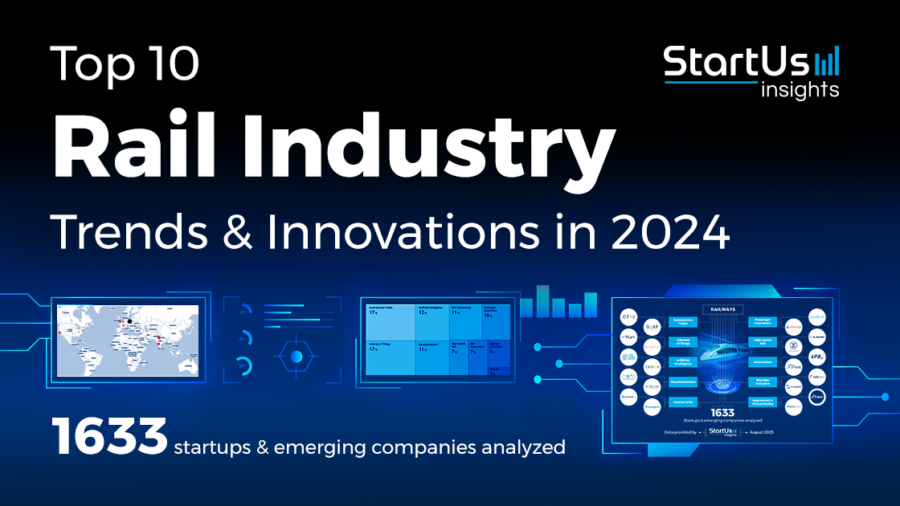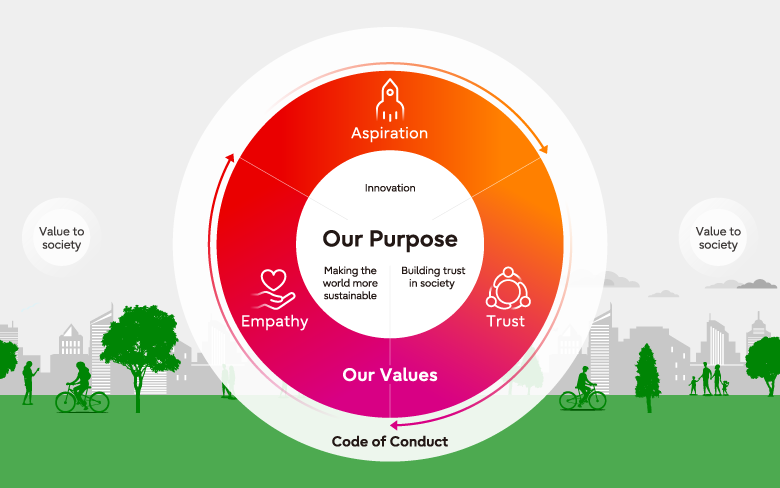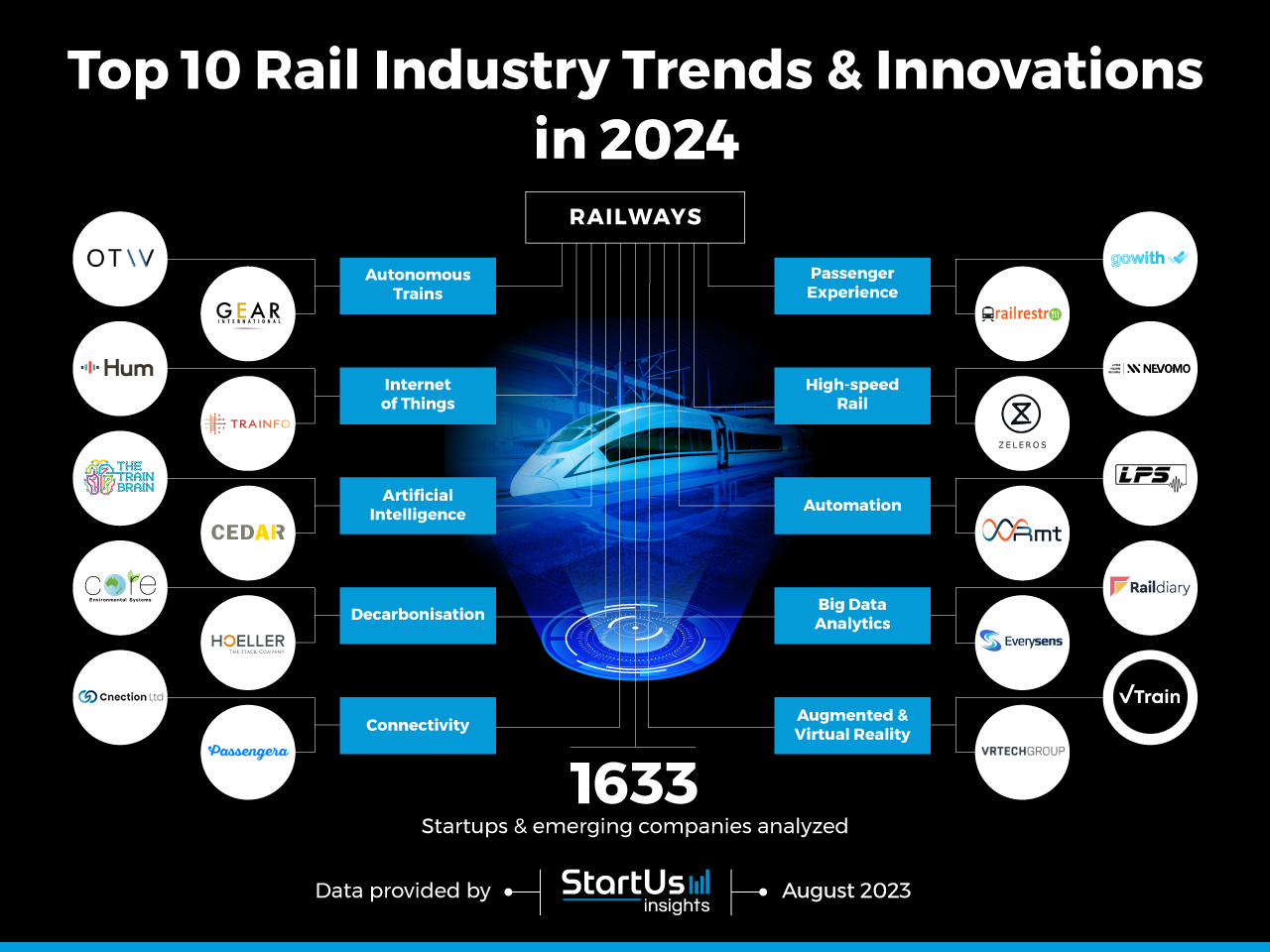Way to run a railway: new partnership aims to lead the industry to a green and digital future, Science
Por um escritor misterioso
Last updated 22 dezembro 2024

A new public-private partnership, Transforming Europe’s Railway System, will aim to bring lagging national systems up to the level of the best, and create an integrated, green, pan-European network. “The idea behind the partnership is to be very innovative, create something new, transform the rather old-fashioned, traditional railway system,” said Enno Wiebe, technical director at the Community of European Railway and Infrastructure Companies (CER), one of the industry associations behind the partnership. But the transformation, “cannot turn everything upside down,” Wiebe said. It must be an evolution, not a revolution. Existing infrastructure needs to be updated without interrupting services. “At the moment, it is also about survival,” said Wiebe. The COVID-19 pandemic has changed travel patterns. While business trips and commuting have largely ceased, weekend trips by train are becoming more popular. The industry must adapt, and that imposes another layer of complexity on the much-needed transformation. “Of course, this crisis will have a terrible impact on the society, but we believe sustainable mobility will remain key for exchanges between citizens and between businesses,” says Nicolas Furio, head of technical affairs at the European Rail Supply Industry Association (UNIFE), another industry association involved in the partnership. The new partnership will build on its Horizon 2020 predecessor, Shift2Rail, which has the aim of creating an integrated European railway network, by removing technical obstacles to interoperability and laying the foundations for the implementation of digital and green technologies. “One key achievement of Shift2Rail was bringing together all the European rail stakeholders to define a strategy and work together on the delivery of new innovations,” said Furio. Shift2Rail had a seven-year budget of €920 million. The industry wants its successor to be bigger, and is calling on the commission for a budget of €1.5 billion for the new partnership, with half coming from Horizon Europe and half from the industry. “We hope that the European Commission will support this request as without the decarbonisation of transport, the climate-neutrality target of the Green Deal will never be reached,” said Furio. “Rail is the only transport mode which has reduced its emissions, while increasing passenger and freight volumes, and improving its energy efficiency. “The request is ambitious - and not overly ambitious,” says Wiebe. ”If we talk Green Deal, then we need a certain budget for research and innovation, and a budget for deployment.” Boosting competitiveness “The rail transport be the backbone of mobility in the future,” said Furio. The directions for getting there are outlined in the European Rail Research Advisory Council’s report on the vision for 2050. By measures such as digitising ticketing machines and using new technology to speed up track maintenance, and increase the resilience of aged infrastructure, the industry hopes rail transport will become the first choice for travellers and moving freight around Europe. Rail systems must be better linked to other modes of transport. Often, a journey from A to B involves multiple modes of transport that trains cannot replace. Better integration will be key to increasing rail competitiveness, said Furio. Globally, Europe is already the technological leader in railway systems. However, new competitors are emerging that have strong support from their governments. This is challenging European companies and slowing down business. “For us, it is important to get support from the EU so that we can keep the world leadership of the European rail supply industry,” Furio said. Railway systems have very long lifecycles and to reach 2050 targets, the partnership must start working on improvements now. “We are not dealing with Barbie dolls here,” said Wiebe. “Barbie dolls only last two to three years and you buy a new one. For a train, the lifecycle is between fifteen and twenty years.” In addition, upgrades are expensive and must be carefully planned. These constraints make it difficult to keep up with the latest technical advances. Historically, “This made it very challenging for the market to be innovative,” says Wiebe. Open to all The railway network spans Europe, from Lisbon to Helsinki, to Bucharest. This means keeping geographical balance in the partnership is key to the roll-out of technology across the continent. “It is all interconnected, and we need to have the same capabilities everywhere,” said Wiebe. Right now, “the situation in Europe is not as harmonious as it might look on the map.” While some railway systems are very modern, others are barely surviving. The partnership will run under the two pillars of system and innovation, with the former developing the architecture for the European railway system, while the latter will deliver the technical advances to support this. The system pillar, Furio hopes, will involve stakeholders from all EU countries, including those that are unable to contribute financially, while those making a financial contribution will lead on technology development. “We need to secure investment from the private sector, but also some flexibility in the programme to make sure any kind of stakeholders can access these activities. We hope there will be some flexibility in Horizon Europe allowing this,” said Furio. “If we can’t get all countries on board, we want to make sure they benefit from the results and the deployment,” Wiebe said.
:max_bytes(150000):strip_icc()/Feasibility_Study-7ba3f195a4f24924974f908014f20455.png)
Feasibility Study

Scarcity: The New Science of Having Less and How It

Top 10 Rail Industry Trends in 2024

Fujitsu Way : Fujitsu Global

Top 10 Rail Industry Trends in 2024

IZA World of Labor - How is new technology changing job design?

Wabtec: Hydrogen is the locomotive fuel of the future (updated

Only 2% of freight between Melbourne and Sydney goes by rail
:max_bytes(150000):strip_icc()/economic_indicator.aspfinal-15940724deaf40e09bf27f9e6b0bf832.jpg)
Economic Indicator: Definition and How to Interpret

Computers rule our lives. Where will they take us next? – Century

Six ways that governments can drive the green transition
Recomendado para você
-
 Timeline: 165 years of history on Indian Railways - Railway Technology22 dezembro 2024
Timeline: 165 years of history on Indian Railways - Railway Technology22 dezembro 2024 -
 What are the Purpose and Elements of the Railway Track?22 dezembro 2024
What are the Purpose and Elements of the Railway Track?22 dezembro 2024 -
 Lao-China railway – an opportunity for more sustainable transport in ASEAN22 dezembro 2024
Lao-China railway – an opportunity for more sustainable transport in ASEAN22 dezembro 2024 -
 Indian Railways plans world's highest railway track: 10 facts about the Bilaspur-Manali-Leh line22 dezembro 2024
Indian Railways plans world's highest railway track: 10 facts about the Bilaspur-Manali-Leh line22 dezembro 2024 -
 Railway National Geographic22 dezembro 2024
Railway National Geographic22 dezembro 2024 -
 Great Western Railway — Story22 dezembro 2024
Great Western Railway — Story22 dezembro 2024 -
 Grand Trunk Railway - Toronto Railway Historical Association22 dezembro 2024
Grand Trunk Railway - Toronto Railway Historical Association22 dezembro 2024 -
 176,104 Railway Track Stock Photos, High-Res Pictures, and Images - Getty Images22 dezembro 2024
176,104 Railway Track Stock Photos, High-Res Pictures, and Images - Getty Images22 dezembro 2024 -
 Types of Railway Sleepers, Their Functions, Benefits and Drawbacks22 dezembro 2024
Types of Railway Sleepers, Their Functions, Benefits and Drawbacks22 dezembro 2024 -
 Siemens Mobility awarded a €3 billion project in India – largest22 dezembro 2024
Siemens Mobility awarded a €3 billion project in India – largest22 dezembro 2024
você pode gostar
-
 Hand drawing funny Stickman design for print or use as poster, card, flyer or T Shirt Stock Vector Image & Art - Alamy22 dezembro 2024
Hand drawing funny Stickman design for print or use as poster, card, flyer or T Shirt Stock Vector Image & Art - Alamy22 dezembro 2024 -
 TGS 09: Dante's Inferno 'Lust' screens have demon boobies – Destructoid22 dezembro 2024
TGS 09: Dante's Inferno 'Lust' screens have demon boobies – Destructoid22 dezembro 2024 -
 Marvel tem o filme mais esperado de 2024, apesar da baixa bilheteria de 202322 dezembro 2024
Marvel tem o filme mais esperado de 2024, apesar da baixa bilheteria de 202322 dezembro 2024 -
 Jogar Melhores Jogos Online Grátis Em uFreeGames.Com22 dezembro 2024
Jogar Melhores Jogos Online Grátis Em uFreeGames.Com22 dezembro 2024 -
 Plants vs. Zombies 2: It's About Time Plants vs. Zombies: Garden22 dezembro 2024
Plants vs. Zombies 2: It's About Time Plants vs. Zombies: Garden22 dezembro 2024 -
 Baixar jogos aplicativos MOD para telefones Android APK e IPhone IOS API Documentation (portuguesmod)22 dezembro 2024
Baixar jogos aplicativos MOD para telefones Android APK e IPhone IOS API Documentation (portuguesmod)22 dezembro 2024 -
Riot Games - Senior Concept Artist Thomas Randby takes us22 dezembro 2024
-
 Aprenda a Como Jogar Jogo da Vida da Brinquedos Estrela22 dezembro 2024
Aprenda a Como Jogar Jogo da Vida da Brinquedos Estrela22 dezembro 2024 -
 Bubble Machine,Bubble Guns for Kids with Big 5 Hole/LED Light/Music/125ml Solution/360° Leak-Proof Design,10000+ Bubbles Per Minute,Fish Bubble Makers Toy for Wedding,Easter,Boys Girls Birthday Gift : Toys & Games22 dezembro 2024
Bubble Machine,Bubble Guns for Kids with Big 5 Hole/LED Light/Music/125ml Solution/360° Leak-Proof Design,10000+ Bubbles Per Minute,Fish Bubble Makers Toy for Wedding,Easter,Boys Girls Birthday Gift : Toys & Games22 dezembro 2024 -
 Primeira Escola de Surdos no Brasil 1857 (INES) - Academia de Libras22 dezembro 2024
Primeira Escola de Surdos no Brasil 1857 (INES) - Academia de Libras22 dezembro 2024
